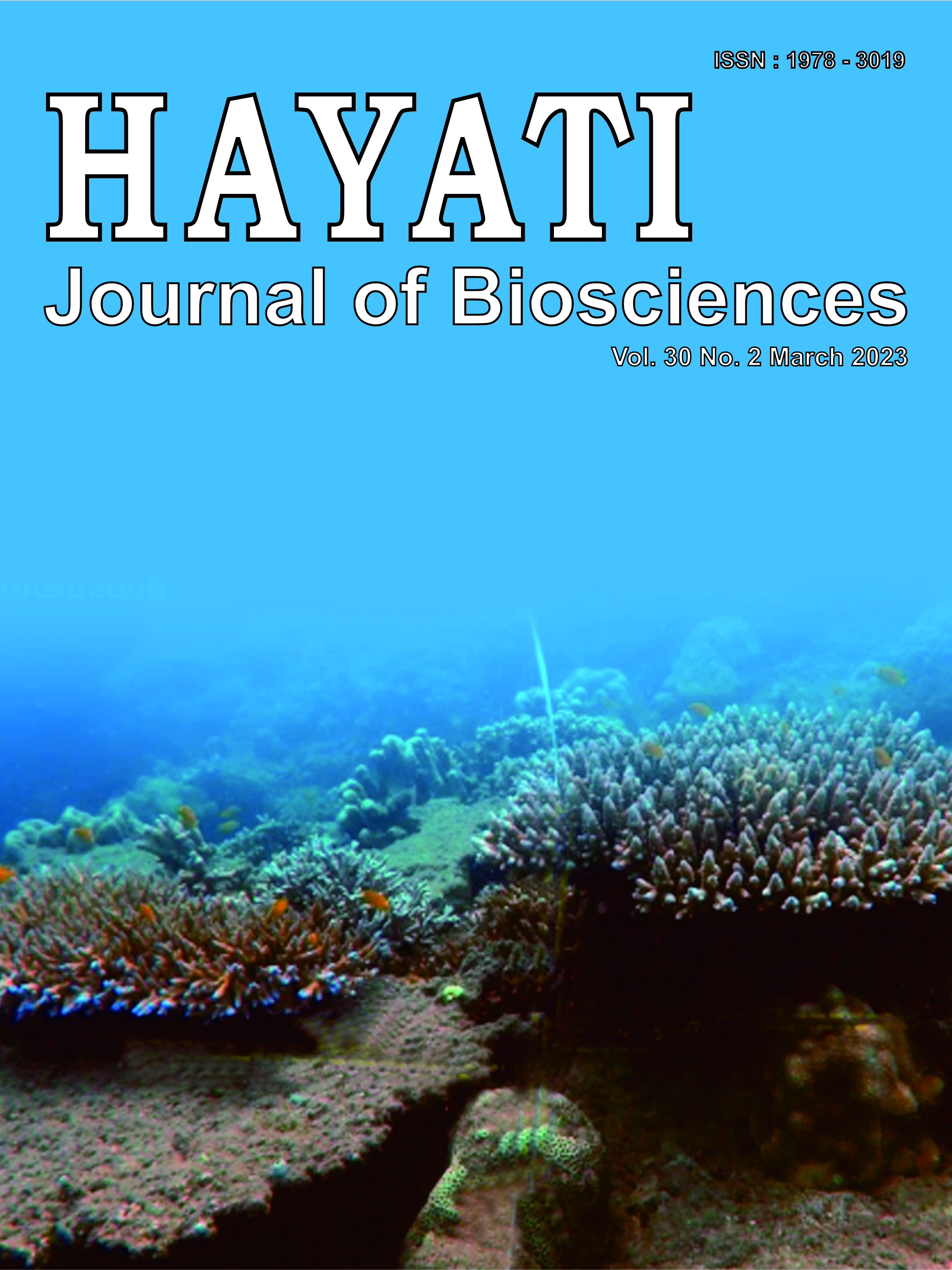A Possible Mixing Genetic Pool of Eastern Little Tuna Euthynnus affinis Cantor (1849) from the Western and Southern Part of Indonesian Waters
Abstract
Eastern little tuna (Euthynnus affinis) is a commercially important species for coastal communities in the western and southern part of Indonesia. However, little is known about its characteristics. Therefore, a comprehensive and broader research of its population structure is imminent in response to conserve and manage the fishery sustainably. This study aimed to fill the gap of the lacking information on the stock separation of eastern little tuna within the Indonesian archipelagic waters and its Economic Exclusive Zone (EEZ). Population genetic approaches were used to examine population structure using the mitochondrial DNA (mtDNA) control region marker. A total of 94 samples were collected from nine landing sites between January to September 2020. Polymerase chain reaction (PCR) was used to amplify the samples, and Sanger sequencing was used to sequence them. The findings showed a mean value of 0.922 for genetic diversity (Hd) and 0.009 for nucleotide diversity (π). Both of these numbers pointed to a high level of genetic diversity. A further population analyses using Analysis of Molecular Variance (AMOVA) and Discriminant Analysis of Principal Component (DAPC) confirmed a mixing gene pool with no distinct population structure detected (ΦST value of 0.097 and p-value>0.05).
Downloads
Copyright (c) 2023 Bram Setyadji, Maya Agustina, Raymon Rahmanov Zedta, Ririk Kartika Sulistyaningsih, Putu Viby Indriani, Daniar Kusumawati

This work is licensed under a Creative Commons Attribution-NonCommercial 4.0 International License.
HAYATI J Biosci is an open access journal and the article's license is CC-BY-NC. This license lets others distribute, remix, tweak, and build upon author's work, as long as they credit the original creation. Authors retain copyright and grant the journal/publisher non exclusive publishing rights with the work simultaneously licensed under a https://creativecommons.org/

























.png) IPB University
IPB University Department of Biology
Department of Biology The Indonesian Biological Society
The Indonesian Biological Society 

